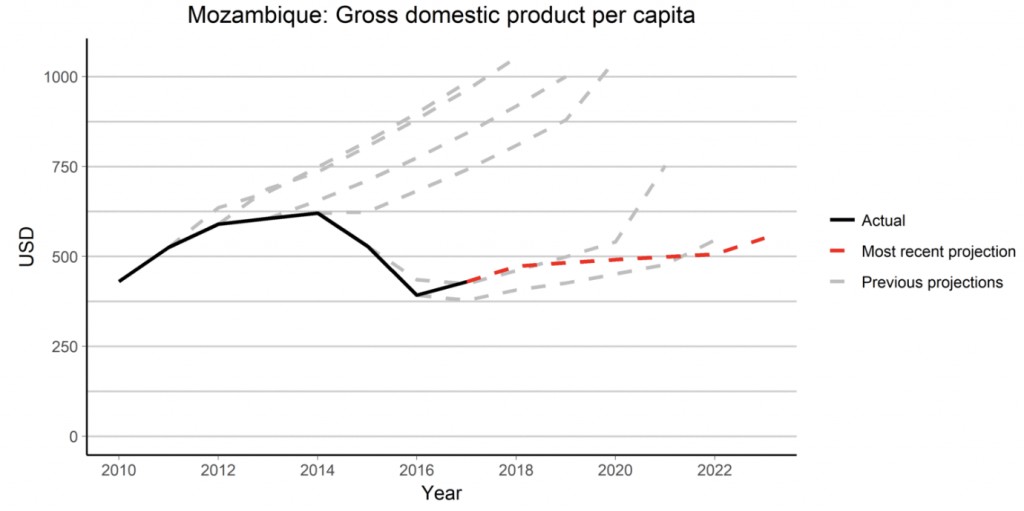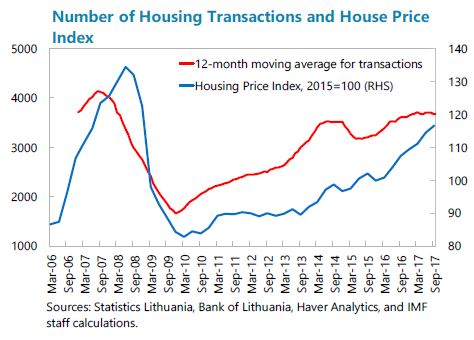Thursday, June 28, 2018
Fiscal Stimulus in a Monetary Union: Evidence from Eurozone Regions
From a new IMF working paper:
“This paper contributes to the open economy local fiscal multiplier literature by estimating regional output and employment responses to federal expenditure shocks in the European Union. In particular, similarly to the literature on foreign aid and growth, I use shocks to the supply of federal transfers (European Commission commitments) of structural fund spending by subnational region as instruments for annual realized expenditure in a panel from 2000-2013. I find a large, contemporaneous multiplier of 1.7 which translates into a cumulative multiplier of 4 three years after the shock. Furthermore, using a novel dataset on bilateral trade between EU regions, I find evidence of demand-driven spillovers up to three years after a shock.”
From a new IMF working paper:
“This paper contributes to the open economy local fiscal multiplier literature by estimating regional output and employment responses to federal expenditure shocks in the European Union. In particular, similarly to the literature on foreign aid and growth, I use shocks to the supply of federal transfers (European Commission commitments) of structural fund spending by subnational region as instruments for annual realized expenditure in a panel from 2000-2013.
Posted by at 9:39 AM
Labels: Inclusive Growth
Dani Rodrik’s preface to Santiago Levy’s Book
From Dani Rodrik’s preface to Santiago Levy’s Book:
“A few years ago as I was finishing up my book Economics Rules: The Rights and Wrongs of the Dismal Science (Norton 2015), I realized that the manuscript contained a serious omission. I had written at length about how and why economists misuse the powerful tools of their discipline, but had said little about the successes. So I decided I would open the book with three vignettes of economics at its best. Each vignette would have its hero: an economist who combined economic models with real-world judgement to make life better for lots of people.
Santiago Levy was one of the three heroes I chose. (The names of the other two heroes will let the reader gauge how demanding was the standard I applied: John Maynard Keynes and William Vickrey.) Santiago was the principal force behind the anti-poverty program Progresa in Mexico that quickly became a model for many other countries. This was an innovative, incentive-based program that was novel at the time, in 1997. It replaced inefficient price subsidies with direct cash grants to poor families as long as their children were kept in school and received periodic health checks. So successful was the program that subsequent Mexican political administrations would seek credit for it by renaming it; hence Progresa would turn into Oportunidades, which eventually became Prospera.”
Continue reading here.
From Dani Rodrik’s preface to Santiago Levy’s Book:
“A few years ago as I was finishing up my book Economics Rules: The Rights and Wrongs of the Dismal Science (Norton 2015), I realized that the manuscript contained a serious omission. I had written at length about how and why economists misuse the powerful tools of their discipline, but had said little about the successes. So I decided I would open the book with three vignettes of economics at its best.
Posted by at 9:36 AM
Labels: Inclusive Growth, Profiles of Economists
Wednesday, June 27, 2018
Assessing Fiscal Space: An Update and Stocktaking
From a new IMF policy paper:
“This paper reviews the experience with the fiscal space assessment framework that was piloted during 2017–18. In 2016, staff proposed an operational definition of fiscal space and a new four-stage framework for its assessment. These were discussed informally by the Board in June, and a Board paper “Assessing Fiscal Space: An Initial Consistent Set of Considerations”incorporating Directors’ views was published in December. Fiscal space was narrowly defined as the room for undertaking discretionary fiscal policy relative to existing plans without endangering market access and debt sustainability. The framework was developed in response to the need to provide a more systematic approach to assessing fiscal space in the Fund’s surveillance. It was designed as a tool to inform the availability of fiscal space over a 3 to 4 year horizon for discretionary action, as opposed to the optimality of its use. Indeed, it was stressed that the availability of space does not necessarily mean that it should be used or should not be further expanded. The framework was piloted in the Article IV consultations of 34 advanced economies and emerging markets, comprising almost 80 percent of global GDP in PPP terms.”
From a new IMF policy paper:
“This paper reviews the experience with the fiscal space assessment framework that was piloted during 2017–18. In 2016, staff proposed an operational definition of fiscal space and a new four-stage framework for its assessment. These were discussed informally by the Board in June, and a Board paper “Assessing Fiscal Space: An Initial Consistent Set of Considerations”incorporating Directors’ views was published in December. Fiscal space was narrowly defined as the room for undertaking discretionary fiscal policy relative to existing plans without endangering market access and debt sustainability.
Posted by at 8:31 PM
Labels: Inclusive Growth
World Economic Outlook Forecast Tracker
David Mihalyi and Tommy Morrison at NRGI created a World Economic Outlook Forecast Tracker that enables users to see how IMF economic projections have evolved over time. On it, you can select from an expansive list of countries and country groupings to track how IMF forecasts evolved year-to-year for dozens of economic indicators, such as GDP growth, government revenues and the budget deficit as well as the price of various commodities. The app shows an animated plot of the forecasts and historical values over 10 years, as well as providing a data download and a plot download (example attached).
David Mihalyi and Tommy Morrison at NRGI created a World Economic Outlook Forecast Tracker that enables users to see how IMF economic projections have evolved over time. On it, you can select from an expansive list of countries and country groupings to track how IMF forecasts evolved year-to-year for dozens of economic indicators, such as GDP growth, government revenues and the budget deficit as well as the price of various commodities.
Posted by at 8:27 PM
Labels: Forecasting Forum
House Prices in Lithuania
The IMF’s latest report on Lithuania says that:
“Household credit remained strong, rising by 7 percent thanks to solid wage growth, and coincided with a surge in housing activity. The number of transactions in the real estate market rose sharply and neared the pre-crisis peak. Moreover, housing prices, especially in major urban centers, rose sharply, prompting the Bank of Lithuania (BoL) to raise the countercyclical capital buffer by 0.5 percentage points in December 2017. Nonetheless, the stock of credit is still modest at 41 percent of GDP, well below the pre-crisis peak of 68 percent of GDP. Similarly, housing prices remain significantly below their 2007 peak, especially when adjusted for inflation. Financial soundness indicators remain strong. Lithuania’s banking system is well capitalized, liquid, and profitable despite the low interest rate environment. Nevertheless, spillovers from real-estate related vulnerabilities in Nordic parent banks, which control most of Lithuania’s financial sector, remain a risk.”
The report also says:
“An analysis of Lithuania’s credit, housing price, and output cycles during 1995–2017Q3, reveals that housing price cycles are more frequent, but shorter-lived than the other two with credit cycles being the most volatile. The analysis finds strong synchronization among them in Lithuania, particularly between the credit and housing price cycles.
Lithuania’s cycles are highly synchronized with those of other Baltic and Nordic countries. This is particularly true for credit due to the close links of Lithuania’s financial system to parent bank developments. Housing price cycles are the least synchronized possibly because real estate markets are mostly affected by local conditions.
An econometric exercise shows that housing price booms are the key determinant of credit upturns. Other factors causing a credit upturn include the negative impact of the global financial crisis, bank profitability, deposit growth, interest rates, and private sector indebtedness. The presence of an economic boom does not seem to be a significant determinant of a credit upturn, suggesting that other, potentially external, factors play a more significant role.
A panel VAR that includes other variables potentially influencing credit demand and supply shows that Lithuania is more vulnerable to shocks than the region as a whole, and that credit and real GDP shocks in Lithuania have a particularly strong impact on Lithuania’s credit. Credit, housing price, and output shocks in other Baltic and Nordic countries on average also have a strong impact on Lithuania’s credit.”
The IMF’s latest report on Lithuania says that:
“Household credit remained strong, rising by 7 percent thanks to solid wage growth, and coincided with a surge in housing activity. The number of transactions in the real estate market rose sharply and neared the pre-crisis peak. Moreover, housing prices, especially in major urban centers, rose sharply, prompting the Bank of Lithuania (BoL) to raise the countercyclical capital buffer by 0.5 percentage points in December 2017.
Posted by at 6:56 AM
Labels: Global Housing Watch
Subscribe to: Posts






